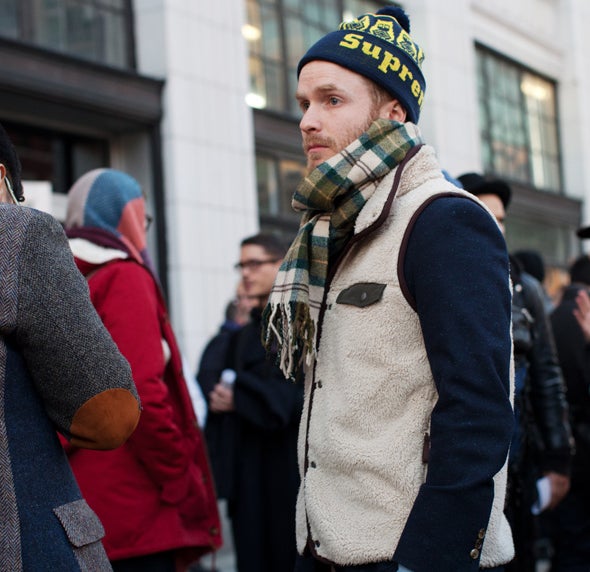
Written by Noah Johnson.
My first job out of college was at Paragon Sports, just outside of Union Square. It was 2005. I'd been living in Colorado spending most of my time snowboarding, doing other outdoorsy things, so I was well- qualified for the job of selling high-end sporting equipment to overpaid yuppies. I took the job hoping I'd meet backcountry skiers or mountain climbers and help outfit them for their next expedition.
But that's not exactly how it went down.
"We'll put you on outerwear," my manager told me on day one. I wanted to be in the sneaker or snowboarding department, but it was early fall, and with winter coming, I was told that I'd make a much better commission in outerwear. "Selling big boys," he said.

It never occurred to me that I was the last link in a chain that had an occasionally lethal end.
A big boy, or biggie, I learned, is the street name for the Marmot Mammoth Parka, a heavyweight down jacket with a Gore-Tex shell. They came in a few different colors—that year the most popular was slate blue—and cost around $700. For each one we sold, I got $7 or $8, nearly double what I'd make for the next highest commission item (a technical ski jacket from Arc'Teryx that almost no one ever so much as tried on).
It was rare I'd meet any sort of athlete. Almost all of my sales were to European tourists, old people who get very cold in the winter, and young black kids looking for biggies, or Marmots. They were the biggest and most expensive jackets on the floor. I often encouraged these customers to consider a more practical piece.
"It really doesn't ever get cold enough in New York to need a 700 fill down jacket," I'd advise them. "If it's cold enough for a jacket this heavy, you won't need a Gore-Tex shell because it'll be snowing, not raining."
I wonder if I might have sold a jacket to a kid who died for it.
But those who were looking for a biggie didn't care about my outerwear knowledge or sensibly battling the elements.
They just wanted to know if I had it in XXL or XXXL. If we didn't have it in stock (a rare occurrence; Paragon's stockroom seemed to have an endless supply, and very few in size medium or smaller), they'd leave without considering anything else.
When I did make a sale, I was happy to get the commission. Still, though, I thought it was odd that Marmot would make a piece with no sports application exclusively for Paragon, and sell it for so much, and make so many in such big sizes, but it didn't seem immoral.
Years later, when I hear that there have been terrible violent crimes linked to biggies, I wonder if I might have sold a jacket to a kid who died for it. At the time I knew how coveted they were, and I knew about kids getting jumped or worse for Starter jackets and Jordans, but I didn't think Marmots had that power.
As a writer for Noisey pointed out, the reviews on Paragon's site warn potential buyers "this is not the coat for yu if yu live in NYC yu will get robbed." Turns out, the crucial facts about this jacket were beyond my area of expertise. I was a retail employee and I was just doing my job. I never considered the possible repercussions of a sale. In the same way that a fast food restaurant worker slinging deadly doses of fat to the masses doesn't think twice about putting money in the register, I was happy to put my little commission sticker on all those Marmot price tags. It never occurred to me that I was the last link in a chain that had an occasionally lethal end.
RELATED: A Man Was Shot at Bryant Park Over the Infamous Marmot Mammoth "Biggie" Jacket
RELATED: Men's Down Jackets to Cop Right Now

